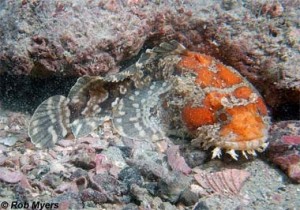 There are around 300 different species of fish swimming in the waters of the Everglades National Park. Some of them look straight out of pre-historic times, like the Gulf toadfish. These fish make their presence know. They’re one of the few fish out there that can make sounds that humans can actually hear. Read the list below for some more interesting facts on this fish:
There are around 300 different species of fish swimming in the waters of the Everglades National Park. Some of them look straight out of pre-historic times, like the Gulf toadfish. These fish make their presence know. They’re one of the few fish out there that can make sounds that humans can actually hear. Read the list below for some more interesting facts on this fish:
- The fish gets its name because the sounds it makes are toad-like grunts; they make these noises to attract a mate.
- These fish are in abundant quantities in the Gulf of Mexico and the Everglades because it is not considered a game fish and known to be poor quality when it comes to eating. It’s slimy outside can be toxic, so people avoid eating it.
- They are brown fish and they spend a lot of their time hiding in sand and seaweed. They prefer shallow waters.
- They are known to be a sluggish fish. They can live as deep as 820 feet in the water.
- It darts out from seaweeds to go after prey.
- They Can stay alive out of water for a decent amount of time.
- They lack scales.
- They can grow up to 12.8 inches in length and weigh up to one to three pounds.
- They are a bottom feeder feeding on crustaceans, annelids, mollusks, and gobies.
- Their slimy coating on their body can cause physical irritation to humans.
- It is also known as a dogfish, mudfish, and oysterdog.
Take a ride through the Everglades yourself to see the vast wetland that is home to so many different species. An airboat ride gives visitors an up-close look at the Everglades; visitors have the chance to spot many different animals, replies, fish, and amphibians. Book an airboat tour with Captain Mitch’s Airboat Tours today by calling 800-368-0065 or clicking here.
Photo courtesy: Rob Myers, www.flmnh.ufl.edu
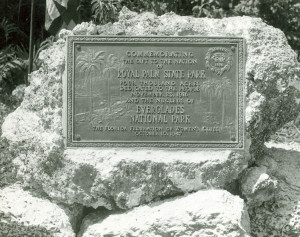 The Everglades is vast, and it has so many different areas for people to explore. One such area is Royal Palm State Park. This Park was established in 1916, but it was surveyed back in 1847 by Jack Jackson. Scientists studied the area and it became known for its botanical diversity and hammock.
The Everglades is vast, and it has so many different areas for people to explore. One such area is Royal Palm State Park. This Park was established in 1916, but it was surveyed back in 1847 by Jack Jackson. Scientists studied the area and it became known for its botanical diversity and hammock.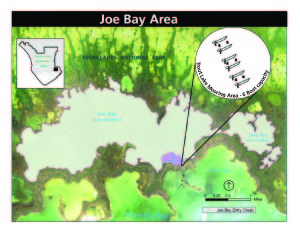 In case you missed it, Everglades National Park opened both Joe Bay and Snag Bay back up to the public on November 24, 2016. This is the first time in more than 30 years these bays have been opened to the public. Joe Bay, which is adjacent to Snag Bay in the park, is now the area’s first “catch-and-release” fishing area.
In case you missed it, Everglades National Park opened both Joe Bay and Snag Bay back up to the public on November 24, 2016. This is the first time in more than 30 years these bays have been opened to the public. Joe Bay, which is adjacent to Snag Bay in the park, is now the area’s first “catch-and-release” fishing area.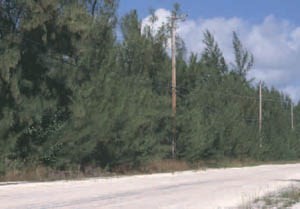 There are around 18,000 plants native to North America. These plants provide food, fiber, and habitats that people and wildlife depend on. Unfortunately, many invasive (non-native species) plants have become a threat to the native plants and are the second greatest threat (next to humans) to them. Many of these invasive plants have found their way into the Everglades. The Park staff work throughout the year to remove these plants whenever they can in order to protect the natural habitat. One of these invasive species is the Australian Pine (Casuarina equisetifolia).They have invaded thousands of acres in southern Florida.
There are around 18,000 plants native to North America. These plants provide food, fiber, and habitats that people and wildlife depend on. Unfortunately, many invasive (non-native species) plants have become a threat to the native plants and are the second greatest threat (next to humans) to them. Many of these invasive plants have found their way into the Everglades. The Park staff work throughout the year to remove these plants whenever they can in order to protect the natural habitat. One of these invasive species is the Australian Pine (Casuarina equisetifolia).They have invaded thousands of acres in southern Florida.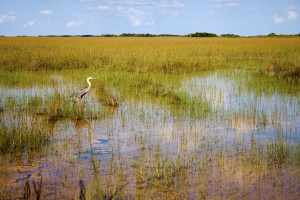 In December, President Obama signed a bill that authorized $2 billion to go towards restoration efforts in the Everglades. This bill was called The Water Infrastructure Improvements for the Nation (WIIN) Act of 2016. This act provides half the funding needed for the Central Everglades Planning Project, and the other half of the funding will come from Florida.
In December, President Obama signed a bill that authorized $2 billion to go towards restoration efforts in the Everglades. This bill was called The Water Infrastructure Improvements for the Nation (WIIN) Act of 2016. This act provides half the funding needed for the Central Everglades Planning Project, and the other half of the funding will come from Florida.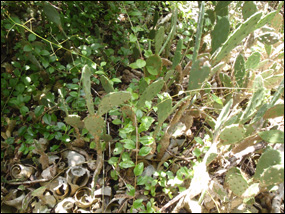 Did you know cacti and succulents grow in the Everglades? Surprising, right? These plants don’t just grow in deserts. In fact, many grow in tropical and subtropical climates. The species, native to the Everglades, thrive off the frequent rainfall and the sunny dates. They require a balance of wet and dry conditions.
Did you know cacti and succulents grow in the Everglades? Surprising, right? These plants don’t just grow in deserts. In fact, many grow in tropical and subtropical climates. The species, native to the Everglades, thrive off the frequent rainfall and the sunny dates. They require a balance of wet and dry conditions.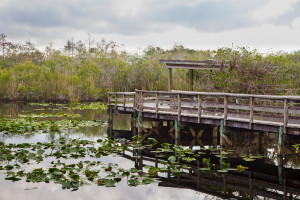 Want to take a trip to the Everglades? It’s certainly a once-in-a-lifetime experience for many. On an airboat tour with Captain Mitch, you’ll be able to get up-close views of the beautiful surroundings, along with the opportunity for many wildlife sightings. However, people often have many questions before entering the Everglades. The National Park Service has many Frequently Asked Questions (FAQ) on its website to help people be better prepared for their trip to the Everglades. Below, we wanted to share some of these questions with you, so you can have a great time and feel comforted knowing as much as possible before you jump on a tour and explore the wetland.
Want to take a trip to the Everglades? It’s certainly a once-in-a-lifetime experience for many. On an airboat tour with Captain Mitch, you’ll be able to get up-close views of the beautiful surroundings, along with the opportunity for many wildlife sightings. However, people often have many questions before entering the Everglades. The National Park Service has many Frequently Asked Questions (FAQ) on its website to help people be better prepared for their trip to the Everglades. Below, we wanted to share some of these questions with you, so you can have a great time and feel comforted knowing as much as possible before you jump on a tour and explore the wetland.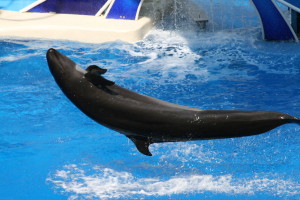 What is a false killer whale? Well, its name is misleading. The false killer whale isn’t actually related to the killer whale, but rather, it’s a member of the dolphin family. This dolphin is also known as ‘blackfish.’ In mid-January, 95 dolphins stranded themselves on a remote coast along Hog Key in the Everglades National Park. Despite rescue efforts, 82 of the dolphins died. According to the National Oceanic and Atmospheric Administration, this event is the largest mass stranding of fall killer whales ever in Florida. Many of the whales were deeply stuck in the mangroves and it was extremely difficult for rescue efforts to be successful. The last time a stranding occurred was back in 1986 when 3 false killer whales out of a group of 40 were stranded close to Cedar Key.
What is a false killer whale? Well, its name is misleading. The false killer whale isn’t actually related to the killer whale, but rather, it’s a member of the dolphin family. This dolphin is also known as ‘blackfish.’ In mid-January, 95 dolphins stranded themselves on a remote coast along Hog Key in the Everglades National Park. Despite rescue efforts, 82 of the dolphins died. According to the National Oceanic and Atmospheric Administration, this event is the largest mass stranding of fall killer whales ever in Florida. Many of the whales were deeply stuck in the mangroves and it was extremely difficult for rescue efforts to be successful. The last time a stranding occurred was back in 1986 when 3 false killer whales out of a group of 40 were stranded close to Cedar Key. In the United States, the National Parks are some of the last places left in the country that provide true, natural darkness at night. This darkness makes for ideal stargazing opportunities. The Everglades is an ideal place to view a starry sky, while also providing a perfect nocturnal habitat for hundreds of creatures. The wildlife relies on the Park’s natural lightscape for navigation, and knowing when to hide from predators.
In the United States, the National Parks are some of the last places left in the country that provide true, natural darkness at night. This darkness makes for ideal stargazing opportunities. The Everglades is an ideal place to view a starry sky, while also providing a perfect nocturnal habitat for hundreds of creatures. The wildlife relies on the Park’s natural lightscape for navigation, and knowing when to hide from predators.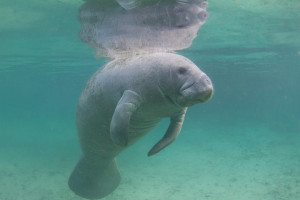 We’re in the midst of manatee season down here in South Florida. The season begins November 15 and goes until March 31. This year, the government will make a decision on whether or not the manatees will still have an endangered species status. Over the years, the manatees numbers have grown, which is why this change of status may occur. Right now, the manatees’ numbers are around 6,300 in Florida; back in 1991, this number was at 1,267. In the last 26 years, the U.S. Fish and Wildlife Service and local governments have helped create more than 50 manatee protection zones, boating rules, and restricted construction of docks in certain habitats.
We’re in the midst of manatee season down here in South Florida. The season begins November 15 and goes until March 31. This year, the government will make a decision on whether or not the manatees will still have an endangered species status. Over the years, the manatees numbers have grown, which is why this change of status may occur. Right now, the manatees’ numbers are around 6,300 in Florida; back in 1991, this number was at 1,267. In the last 26 years, the U.S. Fish and Wildlife Service and local governments have helped create more than 50 manatee protection zones, boating rules, and restricted construction of docks in certain habitats.





